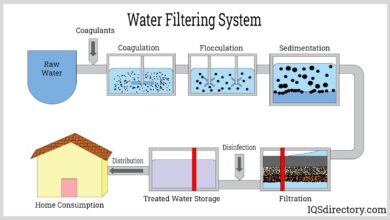Managing Team Tasks- Do’s and Dont’s

Task management across teams with competing priorities and timeframes is difficult. Good coordination keeps projects on track, objectives in focus, and team members working together. But how can managers supervise without micromanaging? Especially with tight deadlines and interconnected processes across teams? This article describes how to efficiently lead team efforts toward success.
Defining Team Task Management
The first step is to plan goals in a structured way by breaking them down into manageable steps, ranking the pros and cons of each, and drawing out clear routines. Tracking ongoing progress against measured goals helps find possible delays early on before they mess up work further down the line. Teams can regularly change jobs, resources, or time-sharing to get around problems with the help of proactive adjustments. With today’s technical tools, it’s easier than ever to see problems as they happen.
Structured planning makes it easier to see how each person fits into the bigger picture when it is used with care and openness. It encourages responsibility by making it clear who is responsible for what, but it still lets application be flexible. Members can see what’s holding things up without having to wait for top-down action to happen by keeping an eye on progress and open issues.
Key Benefits of Efficient Team Management
Effective team task management has multiple benefits:
- Increased productivity – Clear roles and structured workflow allow people to focus efforts appropriately.
- Enhanced collaboration – Open communication and transparency around plans maintain consensus.
- Greater accountability – Tying tasks to specific owners establishes unambiguous accountability.
- Higher quality – Proper pacing and coordination prevent downstream impacts from upstream issues.
- Timeliness – Milestones identify potential delays before they disrupt deadlines.
The more complex the project, the greater the payoff from structured task management. But what defines the right level of oversight?
Best Practices for Managing Team Tasks (Do’s)
Project success depends on appropriately scoping, planning, executing, tracking, and adjusting tasks. The best way to manage team tasks includes:
- Creating transparency around how individual work ties to team goals
- Defining achievable milestones
- Prioritizing critical path tasks
- Assigning clear ownership of responsibilities
- Planning for uncertainties
- Building in flexibility to recalibrate on the fly
- Continuously improving processes after each project
Next-generation tools provide visibility into workload distribution, bottlenecks, and balancing needs. When combined with strong personal leadership, this gives managers an information edge to enhance team oversight.
The key is finding the right balance between structure and oversight on one hand and autonomy and creativity on the other. Maintaining this balance helps manage teams effectively.
What to Avoid in Team Task Management (Don’ts)
Even with the right principles, managers can undermine team effectiveness through missteps. Here are a few things you should avoid to manage teams efficiently.
- Micromanaging: Excessive hovering signals a lack of trust in staff and inhibits autonomy. Find the sweet spot between detached and overbearing.
- Under-communicating: Lack of transparency into status, plans, and priorities breeds ambiguity and misalignment. Prevent confusion through adequate updates.
- Disorganization: Unclear goals, loose deadlines, and temporary task lists make focus difficult. Structure and discipline concentrate efforts.
- Scope creep: Moving targets without realignment stretches resources too thin and prolongs timelines. Guard against shifting goals without resetting plans.
- Firefighting: Knee-jerk reactions to setbacks amplify chaos. Assess the impacts of unforeseen events, then respond intentionally.
- Finger-pointing: Playing the blame game demoralizes staff. Identify process improvements instead of indicting people when things go awry.
Effective Team Task Management in Action
Despite best efforts, projects often veer off plan. How leaders respond influences team cohesion and performance. Below are two scenarios highlighting responsive task management.
Scenario One
The marketing coordinator is responsible for managing many campaigns within the same time frame. When deadlines are tight, it is necessary to exercise careful monitoring to synchronize tasks across creative teams and external partners. The emergence of execution bottlenecks occurs during a launch despite the existence of thorough project plans. The lead immediately goes into firefighting mode, bypassing status checks and making contemptuous remarks about some members of the squad “dropping balls.”
Do instead: Before reacting, the manager should pause to gather information, assess priority impacts, and consider adjustments. A quick stand-up meeting clarifying expectations coupled with workload rebalancing prevents overreacting. Finally, a cool-headed debrief identifying process improvements for the future turns setbacks into learning moments.
Scenario Two
The IT manager is always taken aback by the delays that occur with the project, and he discovers after the fact that there were dependencies and impediments that had not been discovered. As they struggle to keep up with the workload, analysts who are overwhelmed feel both micromanaged and emphasized. The manager is increasing the amount of time spent questioning employees about missing deadlines.
Do instead: Proactively open communication channels between analysts, engineers, and partners to surface blockers early. Create shared visibility to better coordinate hand-offs. Analyze work patterns to identify process chokepoints or overloaded staff. Finally, task-tracking software provides workload transparency for balance and smooth flows.
Conclusion
For a team to be able to effectively marshal their efforts, they need to be able to strike a delicate balance between planning, transparency, coordination, responsive problem-solving that is responsive, and ongoing process improvement. On the other hand, effective task management yields enormous benefits for complicated and interrelated projects. The key is to ensure that the appropriate tasks are assigned to the appropriate individuals at the appropriate time.
These are the situations in which technologies such as ProHance provide executives an information advantage, allowing them to maximize productivity, coordination, and operational resilience among teams that are geographically scattered. Built specifically for the current digital workplace, ProHance utilizes automation, analytics, and artificial intelligence to assist enterprises in various areas, like- Assess workforce capacity models, visualize productivity metrics, identifying efficiency opportunities, mapping employee work patterns, prioritize tasks, balancing workloads, Smooth workflow handoffs.
The primary objective of ProHance is to act as a mission control system throughout the process of coordinating activities across departments, functions, and geographies. Through the use of visibility, it provides managers with the ability to steer strategic choices without resorting to micromanagement.




